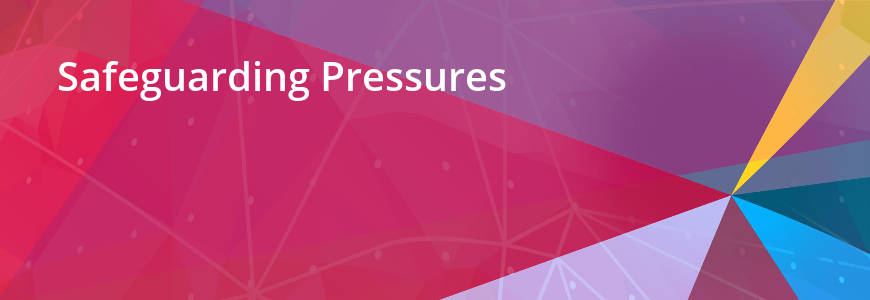The sexual exploitation of children and young people (CSE) -...

The sexual exploitation of children and young people (CSE) has been a consistent focus for government for several years now, resulting in the knowledge of professionals and the awareness of public increasing immeasurably. There is a widespread and welcome understanding that children and young people are victims and that there are often links between CSE and other forms of criminality and violence.
We know that exploitation can take many forms and that it is increasingly facilitated by technology; whether that’s social media, instant messaging or online gaming platforms being used by individuals or organised networks to solicit self-generated indecent images or coerce children to live stream footage from their bedrooms. However, perpetrators also continue to find sophisticated ways to commit offences against children in person as well as or because of technology.
The internet has transformed our lives and most children and young people cannot conceive of life without it. During the three national lockdowns and enduring periods of social distancing restrictions driven by the pandemic, people of all ages spent increasing amounts of time online for work, education and entertainment purposes. We also socialized online too when we couldn’t meet up with friends and family in person. On top of this, Covid-19 significantly disrupted children and young people’s contact with trusted adults in their lives, whether that’s teachers or extended family members. Add to this the additional pressures on parents and carers and it’s perhaps stating the obvious to say online harms and risks have been heightened, although to what extent is not yet fully clear.
National figures show that recorded crimes reduced in 2020, with sexual abuse falling by 10% while reported theft was down by over a third. The ongoing impact of the pandemic continues to skew our insights and understanding of its effect on children, families and communities, although new research suggests there has been an increase in online abuses and exploitation, some of which will have gone either unreported or undetected during this extended period of disruption.
A truly multiagency response is needed to tackle CSE. Close working with heath partners, education and police is crucial in both recognising and preventing harm. Relationship based practice models are showing green shoots of positive impact and sophisticated intelligence gathering is helping disruption efforts. Parents and carers are more aware of online risks but not always confident in taking action. The experience of the last 18 months should result in a renewed focus on understanding and responding to the use of new technologies to facilitate or commit abuse and exploitation.
Of course, it’s the huge multinational tech companies behind Snapchat, Instagram and Tik Tok that can make the biggest difference to the greatest number of people. This is an active debate with plenty of suggestions about how the government’s new Online Harms Bill could make companies take more responsibility for the harm that is perpetrated via their platforms, from regulation, a code of practice and fines to greater responsivity to reports of abuse. This really does have to be a partnership effort.
Charlotte Ramsden, ADCS President 2021/22 and Strategic Director for People at Salford City Council.
This article first appeared in CYP Now Magazine
Related Articles
John Pearce comments on measures to introduce mandatory reporting in the...
In Safeguarding & Child Protection
John Pearce responds to the National Panel’s annual report.
In Safeguarding & Child Protection
John Pearce on the government’s response to the Safeguarding children with...
In Safeguarding & Child Protection
ADCS responds to a further consultation on mandatory reporting by the Home...
In Safeguarding & Child Protection
Unaccompanied asylum seeking (UAS) children have received substantial media...
In Asylum
ADCS response to the DfE’s consultation on updates to its information...
In Safeguarding & Child Protection
ADCS has responded to the recent DfE consultation on updates to Working...
In Safeguarding & Child Protection
ADCS response to the government consultation on a new mandatory reporting duty.
In Safeguarding & Child Protection
John Pearce comments on the government response to the final report of the IICSA
In Safeguarding & Child Protection
ADCS response to the Child Safeguarding Practice Review Panel’s phase two...
In Safeguarding & Child Protection
John Pearce comments on mandatory reporting of csa
In Safeguarding & Child Protection
Steve Crocker responds to the Children’s Commissioner’s report on...
In Safeguarding & Child Protection
ADCS President Steve Crocker said: “The Association has significant concerns...




